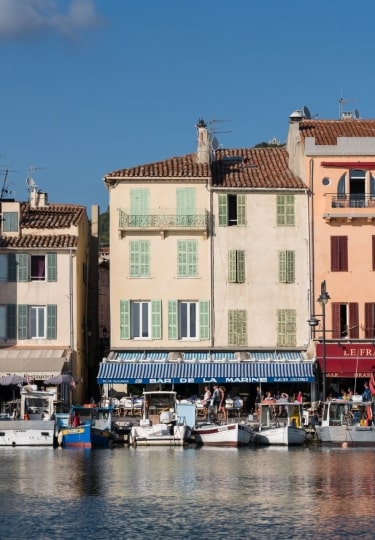Provence, France, is a land steeped in European culture. This southern region of the country is celebrated for its outstanding food and wine, deep gorges, and its arresting medieval villages, not to mention a profusion of sunny, Mediterranean sparkle, and more than a little glamor.
If you plan on visiting the region, you’ll quickly realize that Provence is teeming with delightful destinations to explore beyond the historic port cities along the coast.
Why Visit Provence
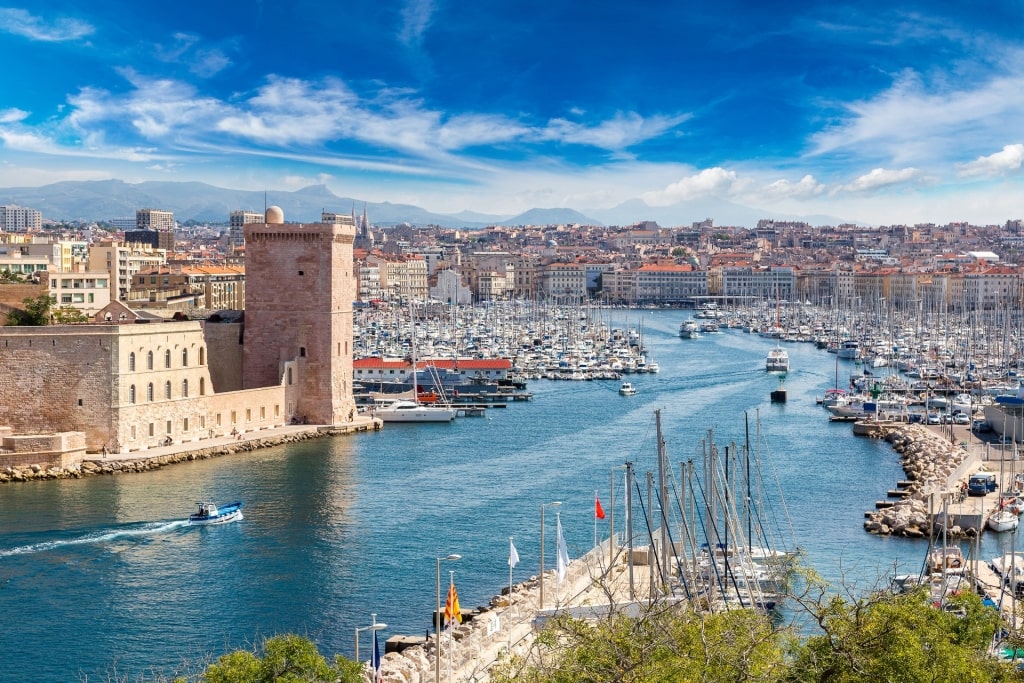
Marseille
From the white horses running through the marshy Camargue to an abundance of gorgeous seaside and mountain terrain, old Roman towns and picturesque villages, Provence seemingly has it all.
Irrespective of whether you’re a sun-worshiper, content with lounging on the sand or strolling the seaside promenade, or in search of the culture of museums and historical sites in France, Provence will provide you with all of the holiday-themed diversions you could dream of, and so much more.
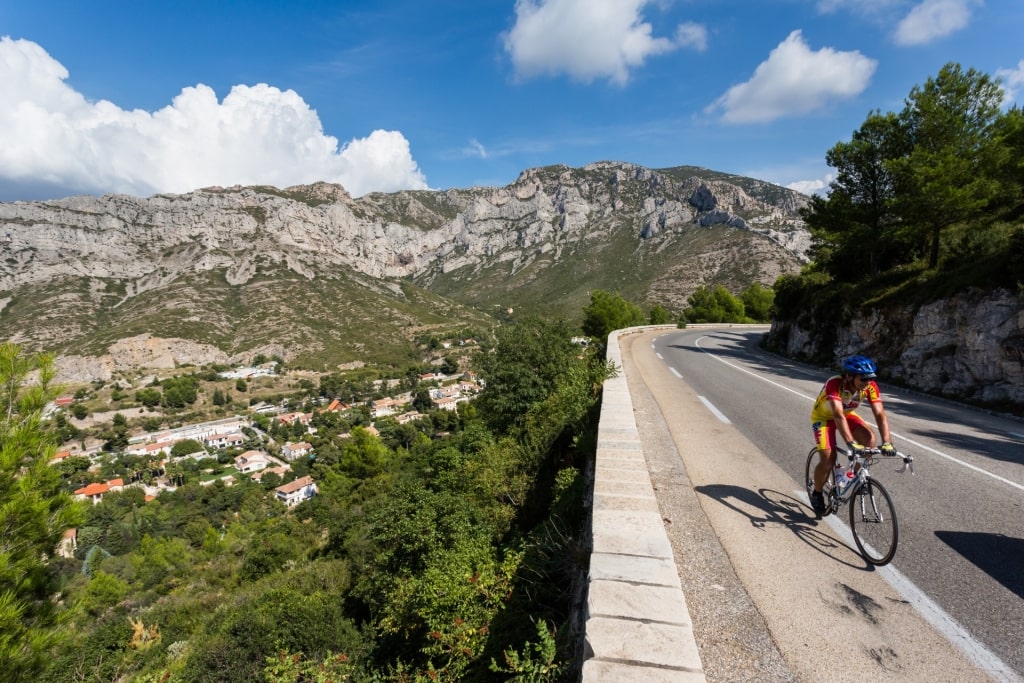
Marseille
Sun, sand, mountains, sea, topnotch gastronomy, river valleys, ancient villages, fragrant lavender fields, remarkable architecture, all within easy reach of the coast, are just a few reasons to fall in love with Provence.
History & Culture
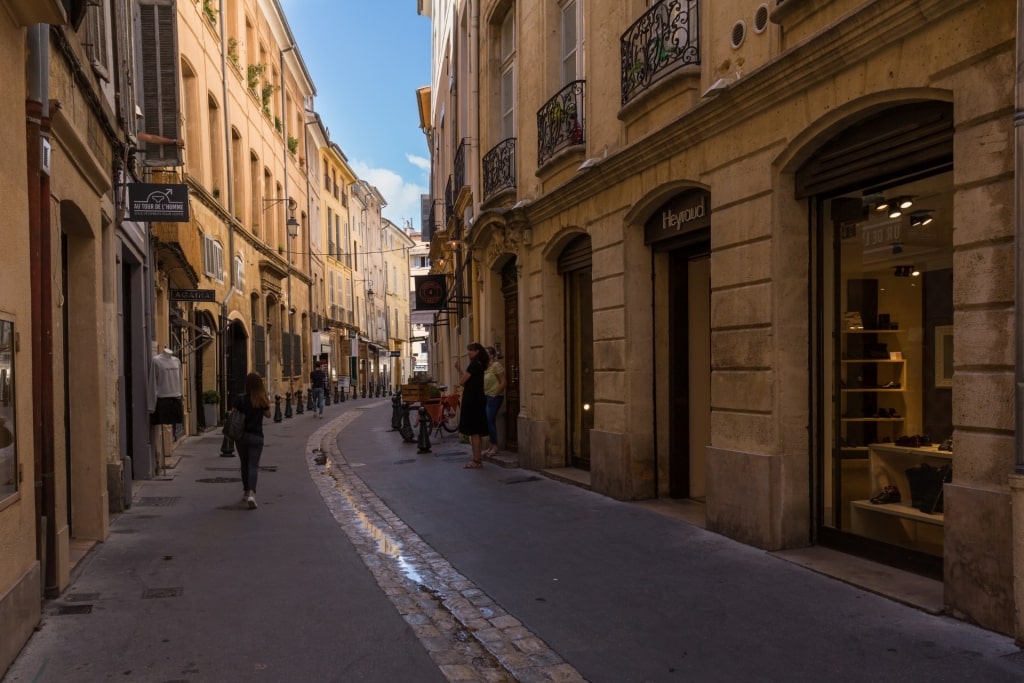
Aix-en-Provence
The history of Provence is long and complex, to say the least. The Greek Phocaeans displaced the Celtic tribes in the region around the 7th century BC. The Romans moved in during the 2nd century BC, ruling from Aix-en-Provence.
Naturally, the Romans brought their culture with them, building and expanding on Greek traditions and architecture, a good example being the magnificent amphitheater at Arles.
As Rome’s influence waned, Germanic peoples arrived, along with Christianity. Different groups, including the Catalans, Moors, Visigoths, and others vied for supremacy in the region.
Eventually, Provence fell under European sway, with the Roman Catholic Papacy setting up shop in Avignon during the 14th century, where it remained for around 70 years.
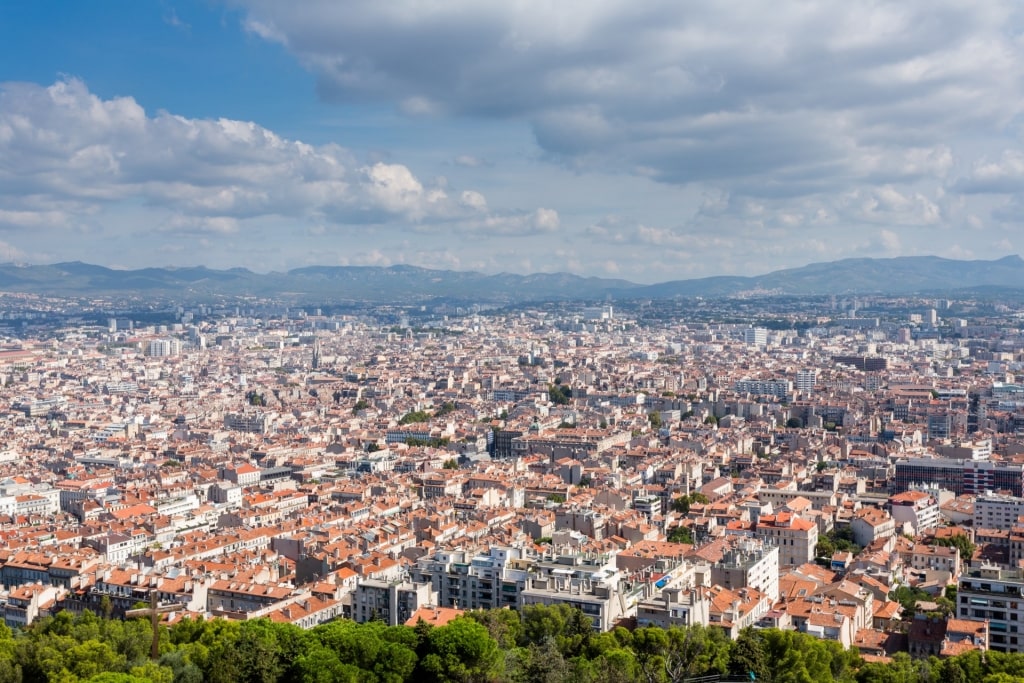
Marseille
The bulk of Provence merged with the rest of France in 1486, under King Louis XI. During the 16th century, Provence saw extreme levels of murder, violence and massacres as Catholics and Protestants fought one another during the French Wars of Religion.
The French Revolution of 1789 also saw death and mayhem visited upon Royalists and many others throughout France, including Provence.
After the horrors and upheaval of the 20th century’s two World Wars abated, including German occupation of France during WW2, Provence and the French Riviera emerged as one of the most glamorous and visited destinations in France—and the world.
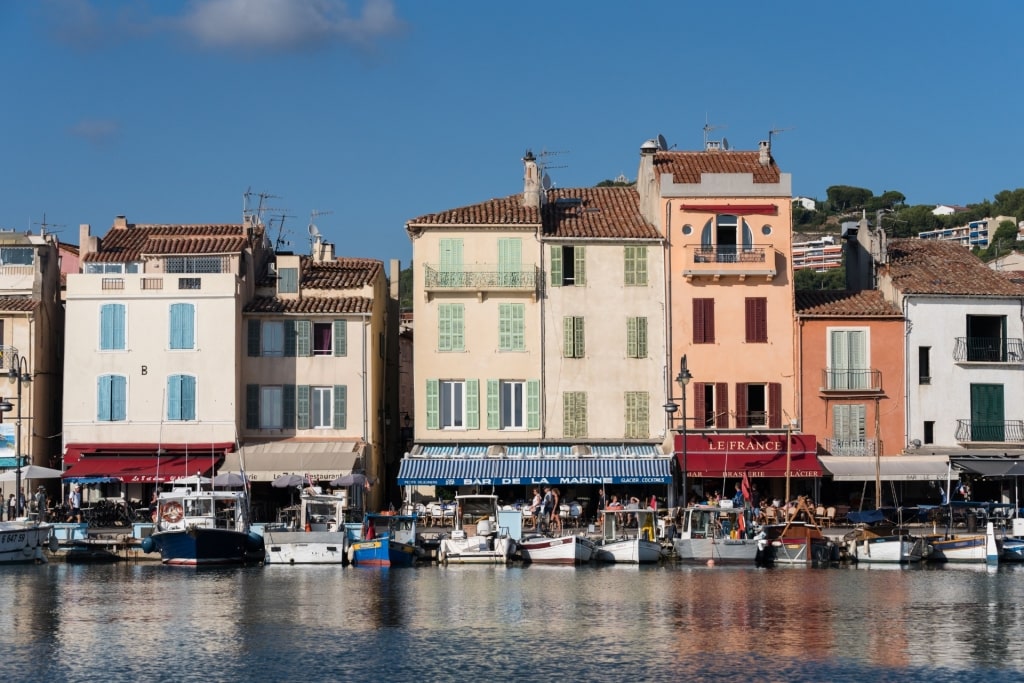
Marseille
Thanks to the region’s amazing climate, expert winemaking, culinary excellence, and its well-preserved historical sites, this part of southern France continues to attract pleasure-seeking crowds, including many French residents who take their summer vacations here.
There’s also a significant expatriate community, drawn by the prospect of the good life in the sunshine.
Tips for Visiting Provence, France
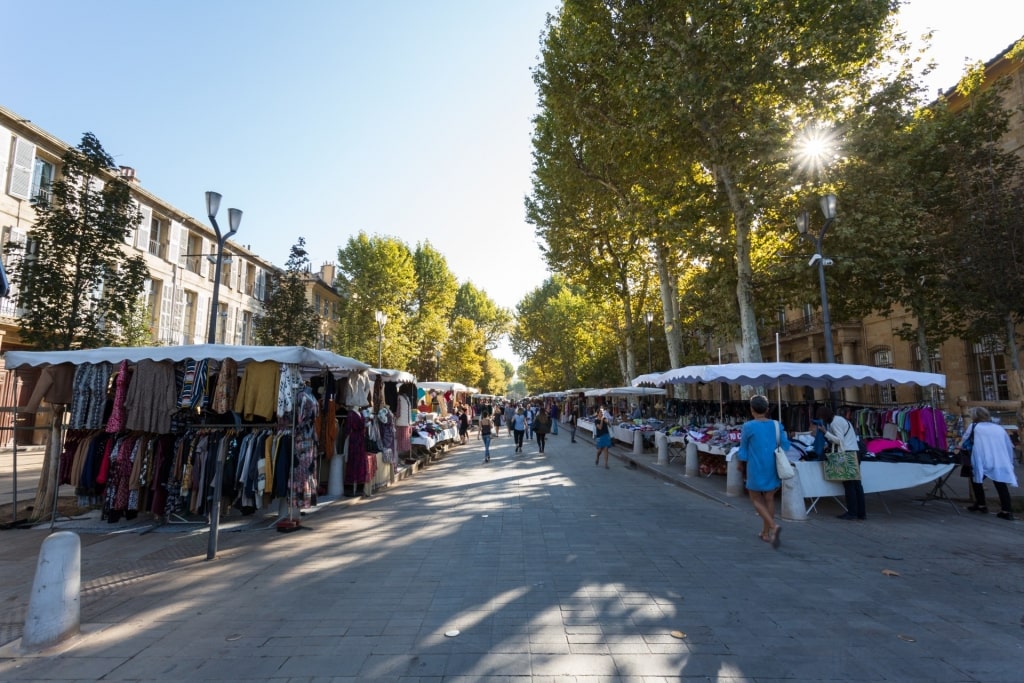
Aix-en-Provence
You’ll quickly learn that whether you’re keen to explore ancient Roman towns, lie on the beach, browse open-air markets, or wander through nature that reflects the bright hues that inspired the painter Van Gogh, there’s more to see here than you can fit into a single trip to Provence.
When in Provence, pace yourself. Don’t rush, and make a list of the activities and attractions that interest you the most. Try to soak up the leisurely pace of life; for all the bustle and glamor of the coastal resorts and cities, everything moves slower here.
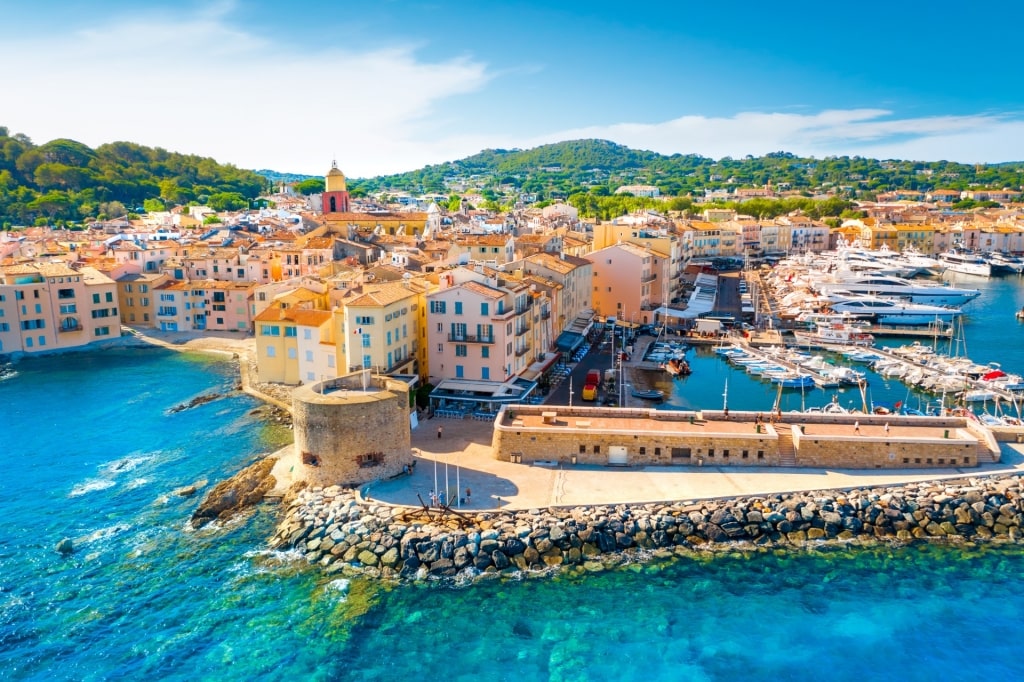
Saint-Tropez
Provence is a popular summer destination in Europe, so expect it to be at its busiest during those months, although you can always find quiet places to enjoy away from the coast.
If you want to see those famous lavender fields in their purple summer haze, time your visit from late June to early August. Bear in mind that the French take their holidays en masse in August.

Parc Naturel Régional du Verdon
If you arrive in the early autumn, you’ll still find the sea warm enough to swim in, the landscape glowing autumnal gold.
And while you’ll find English widely spoken, learning a few basic phrases in French will foster goodwill among the locals.
Etiquette, too; for example, it’s always polite to greet the shopkeeper with “Bonjour” when you walk into a shop or browse a market stall.
Also, if you’re a gourmand, try to learn the French names of the dishes you want to try—such as bouillabaisse, daube Provençale, pissaladière, ratatouille, or soupe au pistou—as you can’t always count on English translations on the menus.
Wildlife & Nature
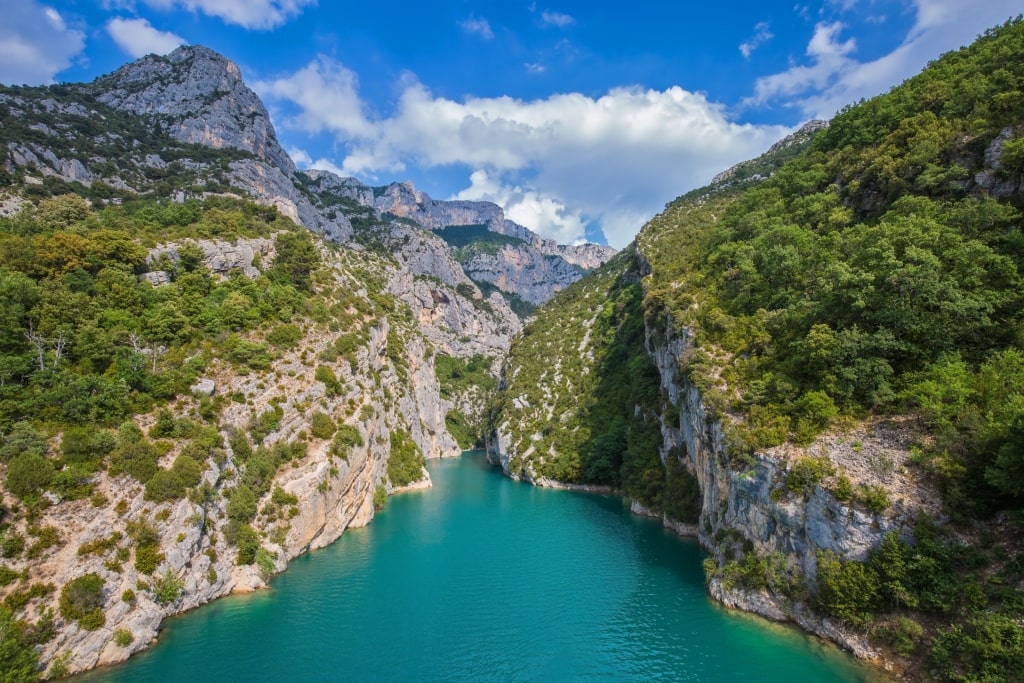
Gorges du Verdon
The diversity of flora, fauna and topography in Provence is quite spectacular. When it comes to landscapes, you have natural wonders like Parc Naturel Régional du Verdon with its dazzling Gorges du Verdon, Europe’s deepest gorge.
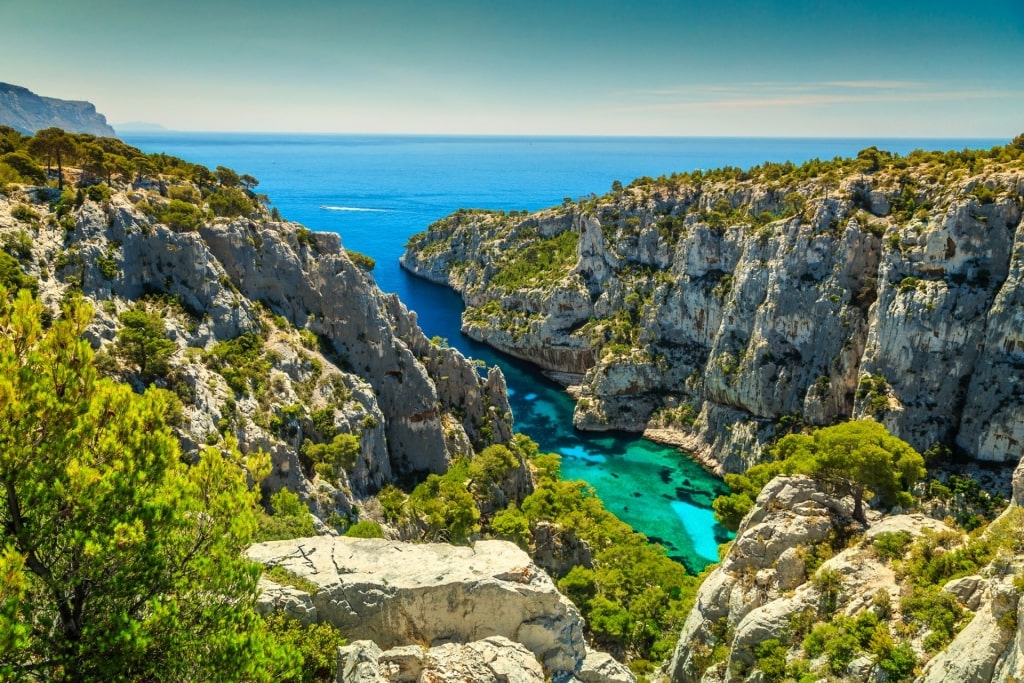
Parc National des Calanques
Or the craggy limestone beauty of Parc National des Calanques, close to Marseille, where the towering Calanques massif meets the aquamarine sea.
And don’t forget the marshy Camargue Regional Nature Park, which is a haven for flocks of pink flamingos, different bird species, the white Camargue horses, and the velvety black Camargue bulls and cows.

Ibex
As far as mammals go, you may run across badgers, foxes, ibex, wild boar, and more when you’re out in nature. Wolves have even crossed over from Italy, with some small packs working their way south, down from the Alpes-Maritimes department, northeast of Toulon.
Things to Do & Attractions in Provence, France
Visit Marseille’s Historic Buildings

Marseille
When in Marseille, it would almost be a sin not to immerse yourself in the port city’s rich history. One of the best ways to get a feel for the past is to visit a few of Marseille’s most notable historic buildings, including Notre Dame de la Garde Basilica, Cathédrale La Major, and the water-themed Longchamp Palace.
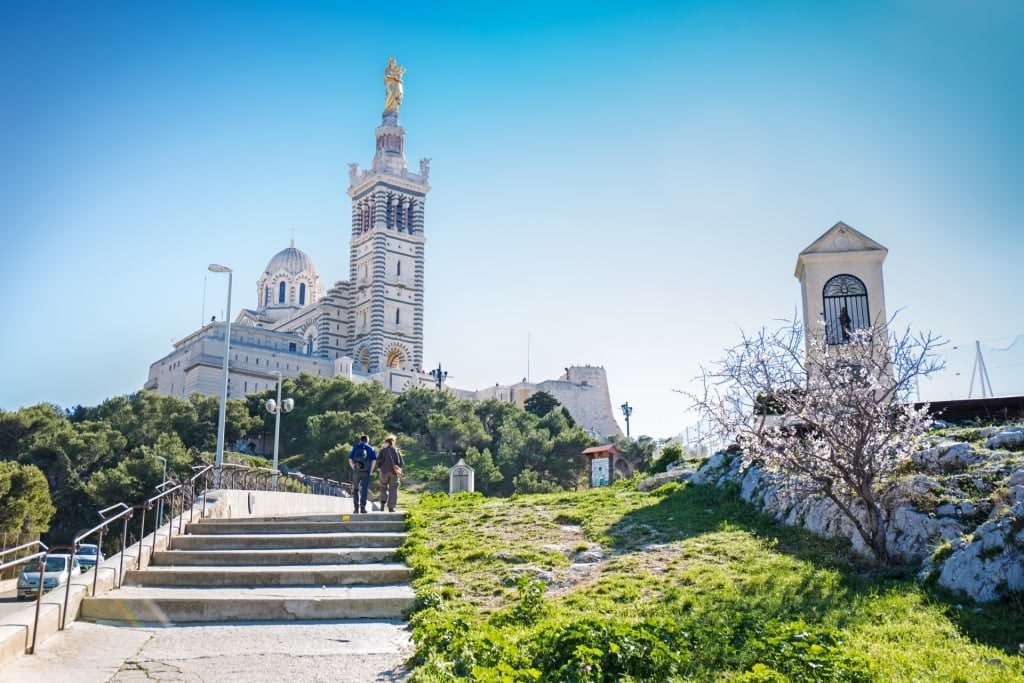
Notre Dame de la Garde Basilica, Marseille
Notre Dame de la Garde Basilica, fondly referred to by locals as the “La Bonne Mère” (The Good Mother) is an icon of Marseille, serving up all-encompassing vistas from its perch atop the highest hill in the city.
Work on the Romanesque and Neo-Byzantine basilica began in 1853 and lasted four decades. You can visit this popular French landmark on foot, or take a ride on the “le petit” sightseeing train to the top of the hill.
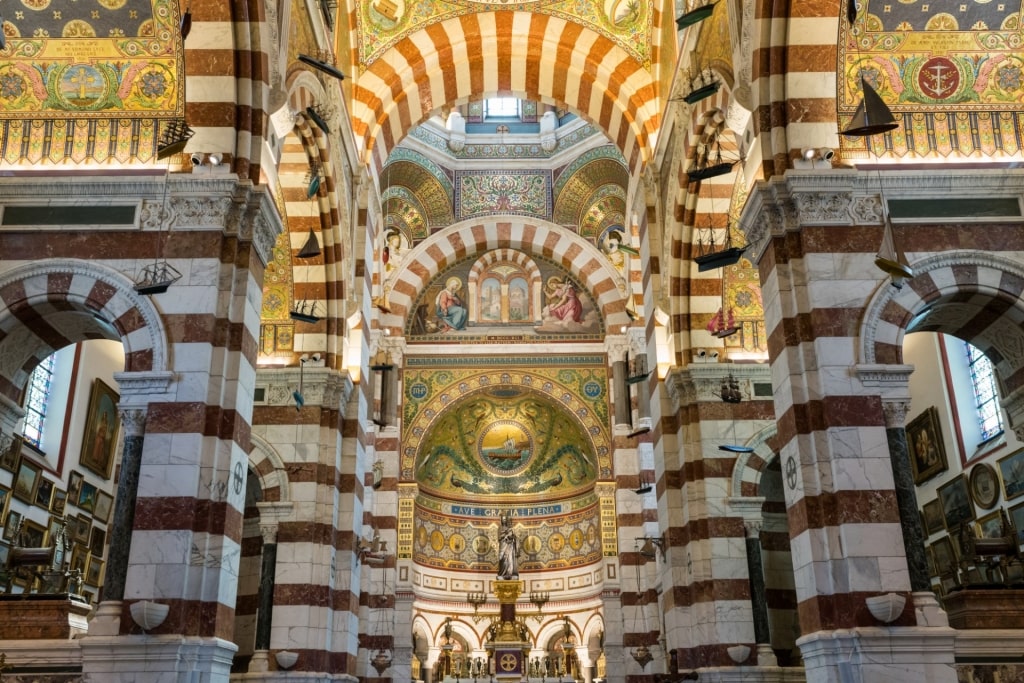
Cathedral of Sainte-Marie-Majeure, Marseille
For impressive architecture, one of the best things to do in Marseille is to visit the 19th-century Cathedral of Sainte-Marie-Majeure, initially designed by French architect Léon Vaudoyer.
The massive cathedral, in the La Joliette maritime district, employs a variety of construction styles, materials and mosaics. Napoléon Bonaparte laid the first stone here.
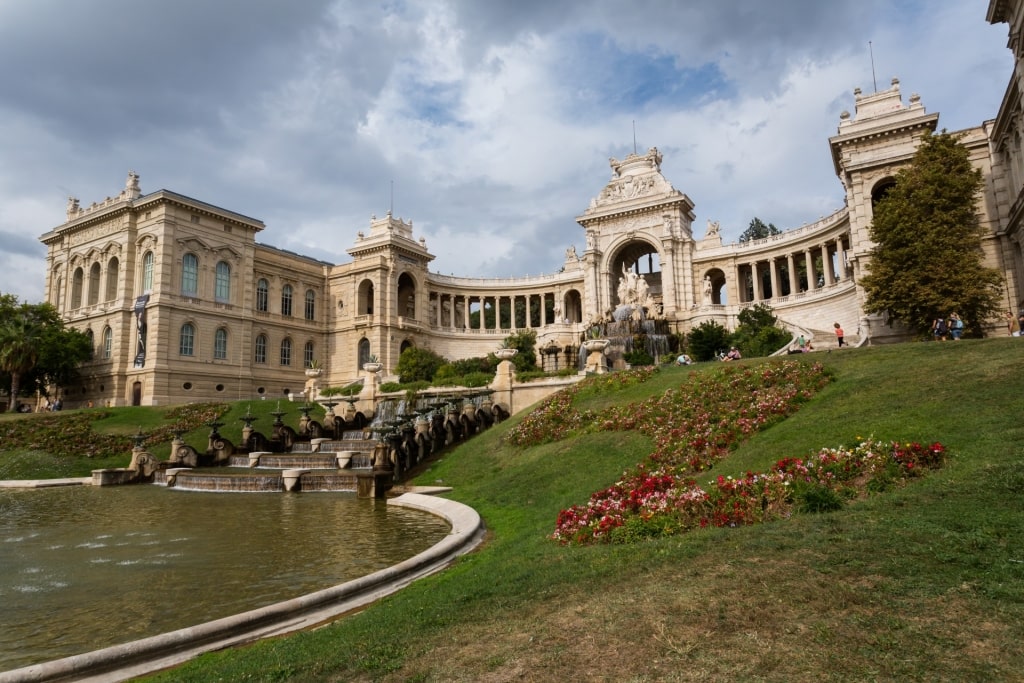
Palais Longchamp, Marseille
And try not to miss Palais Longchamp, one of the best places to visit in the South of France. This ornate catch basin, or reservoir, features sculptures, columns, and water cascading down stone steps.
Palais Longchamp is bookended by French museums on either side and also features a lovely park, perfect for an afternoon stroll.
Wander Around Marseille’s Old Port
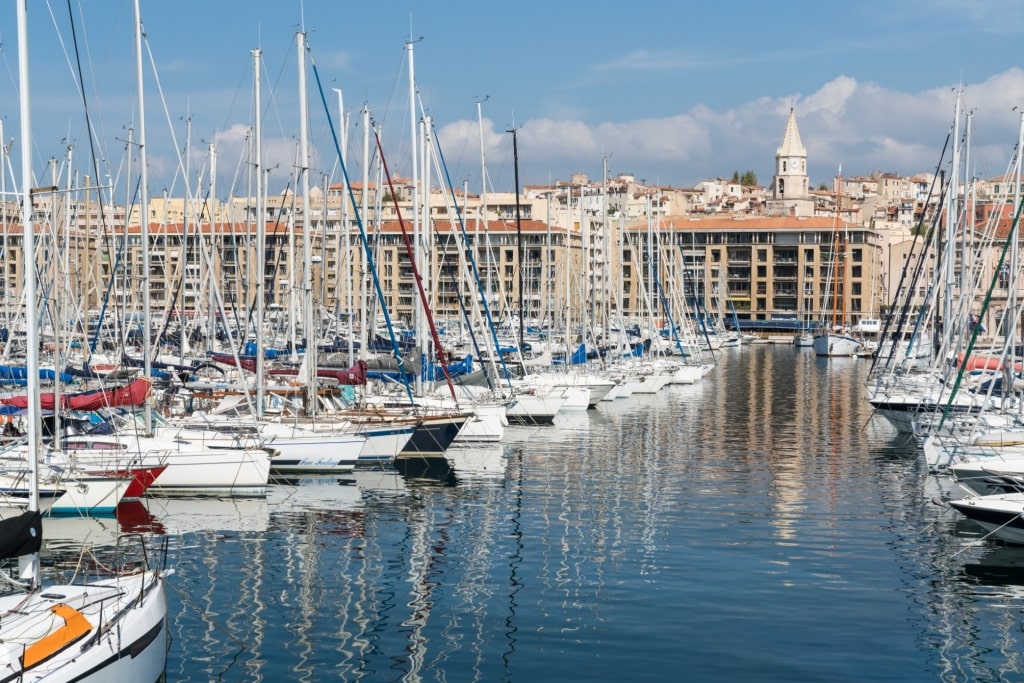
Old Port, Marseille
If arriving in any European port city, it makes sense to wander around the port itself to get a feel for the place. Marseille’s extensive, rectangular Old Port exudes a nostalgic vibe, reaching into Marseille’s past while preserving the bustle of modern life.
You can visit the Quai des Belges fish market in the morning, or wander around and gaze at the boats, visitors, and Marseillais (the locals) going about their business.
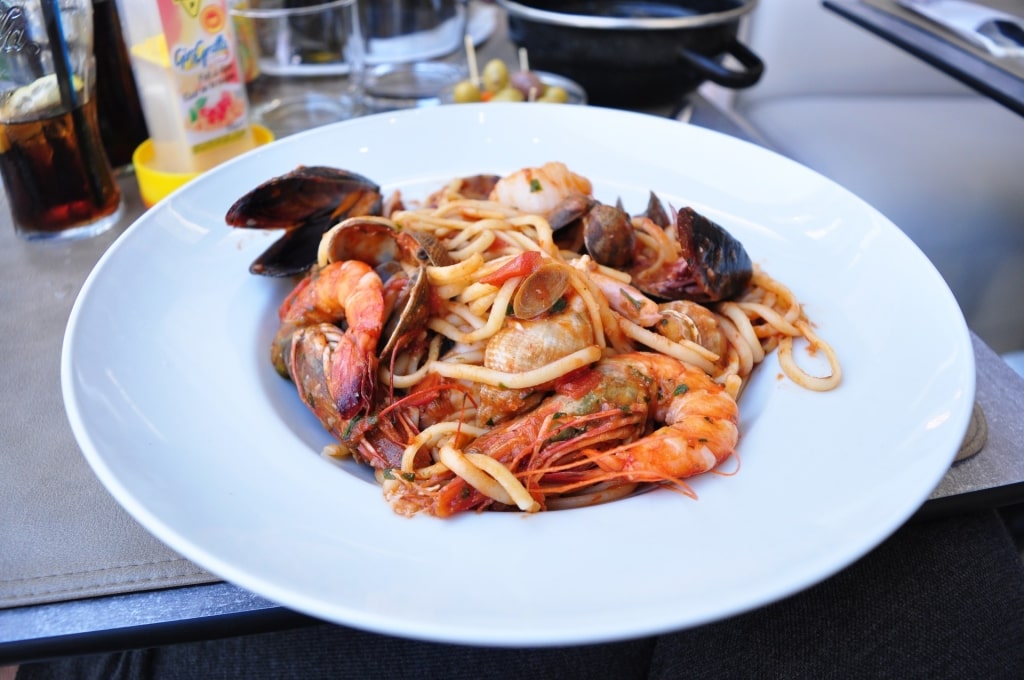
Seafood pasta
There are cafés and restaurants scattered around the port, where you can get a caffeine fix, a cooling gelato, or some fresh seafood and fish. Sip your coffee or wine while admiring the harbor and the Phare de Sainte Marie, a lighthouse no longer in use.
Read: Best Beaches in & Around Marseille
Soak Up Aix-en-Provence’s Sun-Filled Culture
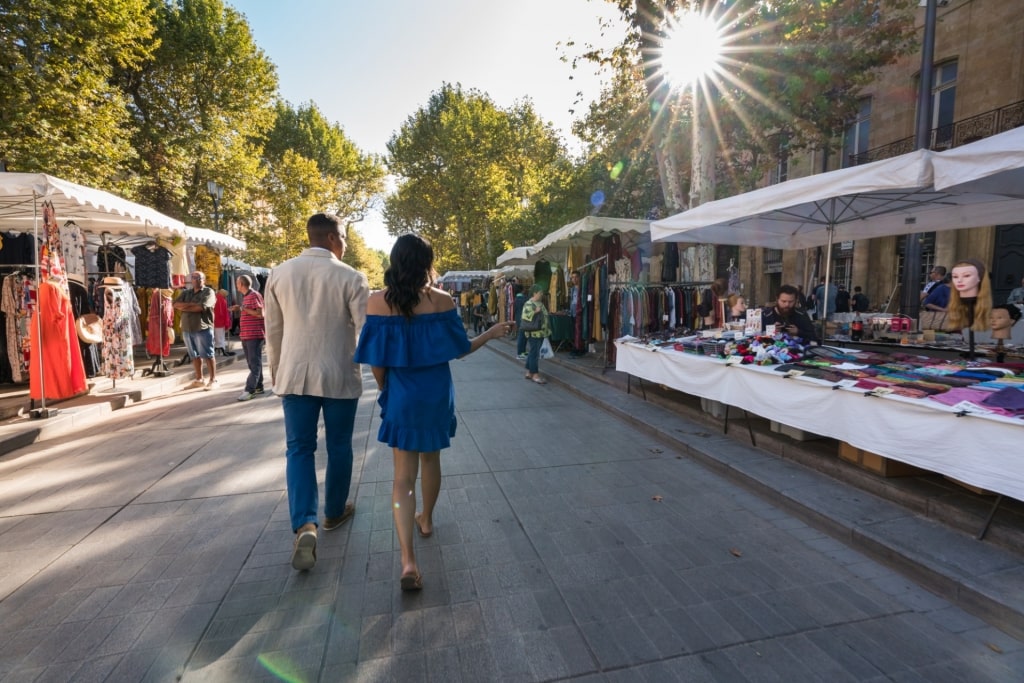
Cours Mirabeau, Aix-en-Provence
Aix-en-Provence, north of Marseille, is one of those picturesque cities that you can ramble through and all day long come across inspiring architecture, cool art galleries, and designer shops, especially along the tree-lined Cours Mirabeau, where you’ll find some of the best shopping in France.
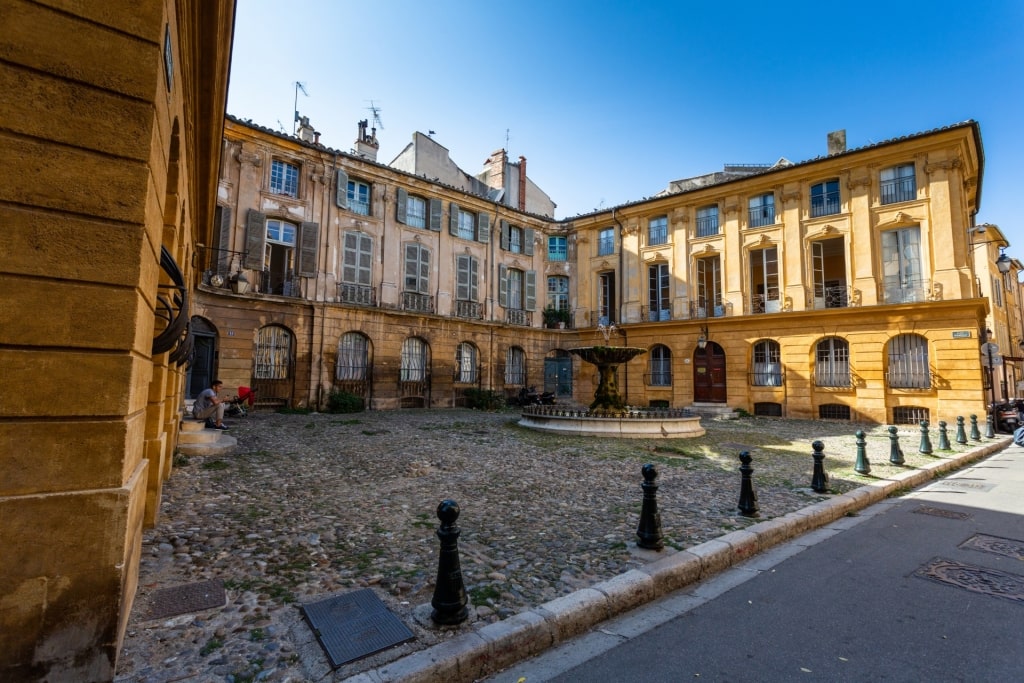
Place d’Albertas, Aix-en-Provence
Among the best things to do in Aix-en-Provence is visit its historical mansions, numerous fountains, like the cast-iron fountain located in the Place d’Albertas, and museums like Musée Granet, and Cezanne’s studio.
Cézanne’s trail follows French painter Paul Cézanne’s time in the city, visiting locations that highlight his art, life and career.
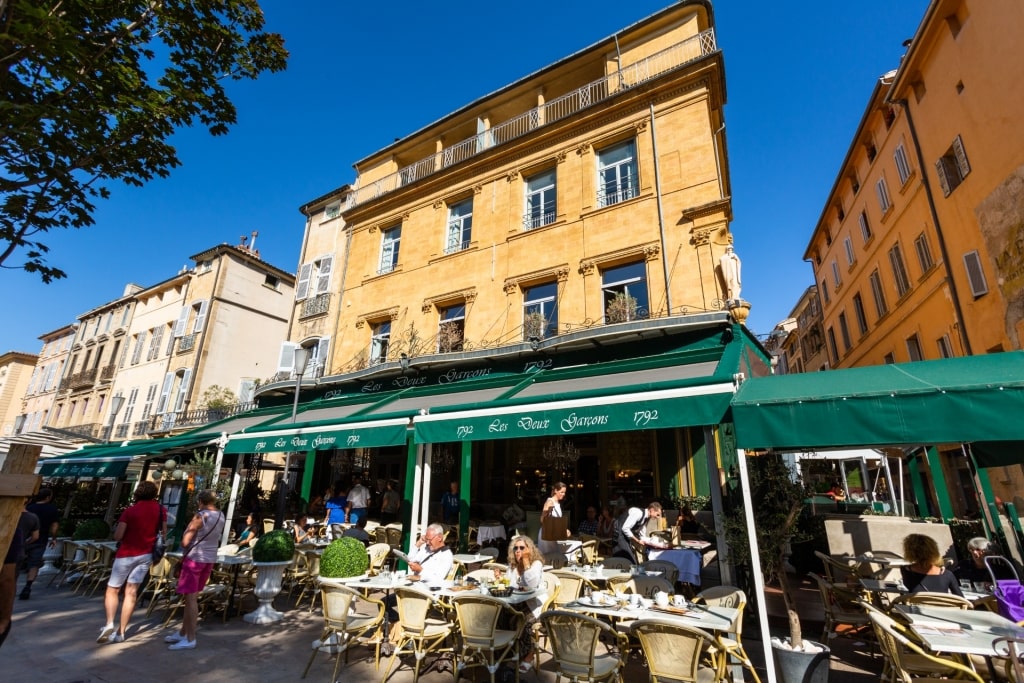
Aix-en-Provence
Stop by a local bistro or café during your walks, and partake of Aix-en-Provence’s culinary and wine traditions, perhaps sampling some beef from bulls raised in the Camarge, and washing it down with a glass of rosé or a punchy red.
Visit Medieval Les Baux-de-Provence
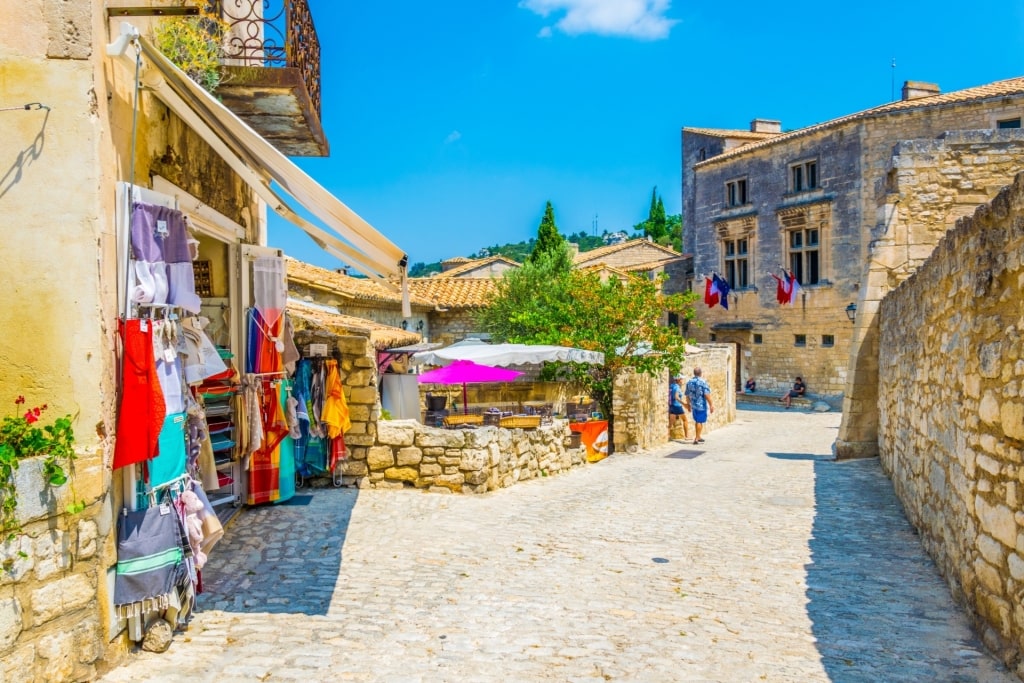
Les Baux-de-Provence
Les Baux-de-Provence is an ancient village that accepts foot traffic only. You’ll want to call upon this hamlet for its medieval charm, historic churches, and imposing fortifications.
Take in the views of the surrounding countryside, mile upon mile of trees, vineyards, olive groves, and rocky terrain.
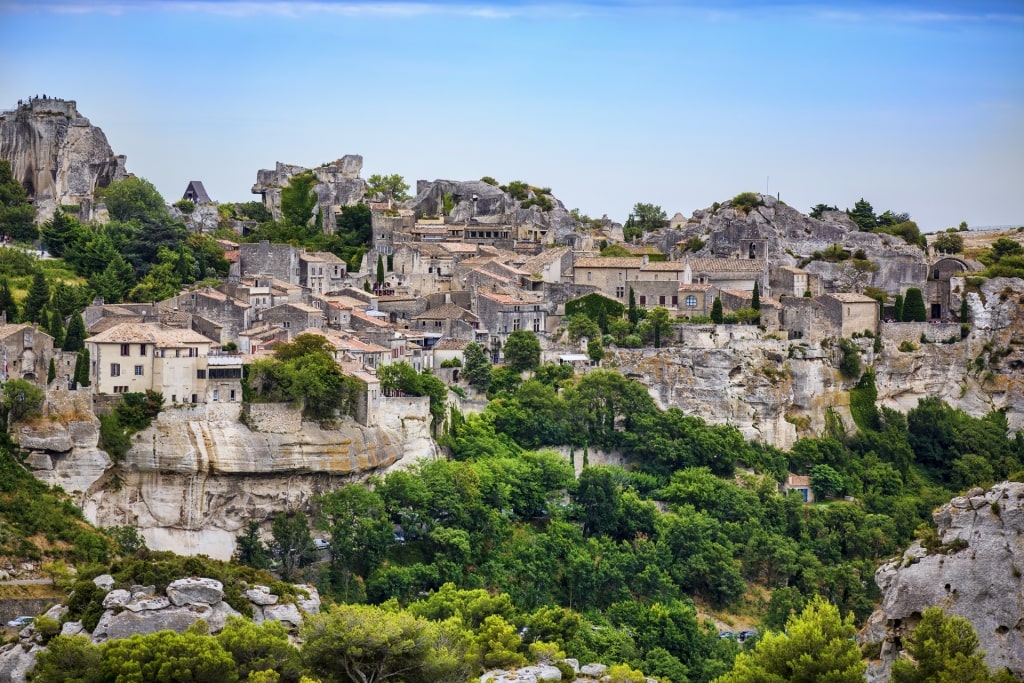
Les Baux-de-Provence
The village, with only 400 residents or so, is considered one of the most beautiful in France. Walk the stone ramparts, check out Baux’s French castle and fortress, the Château des Baux, then visit the former bauxite Carrières De Lumières quarries, now used as a multi-media art space.
Les Baux-de-Provence is also distinguished by its superb wines, which you can imbibe—perhaps at a private wine tasting—during your hilltop sojourn.
Enjoy the Seaside Allure of Saint-Tropez
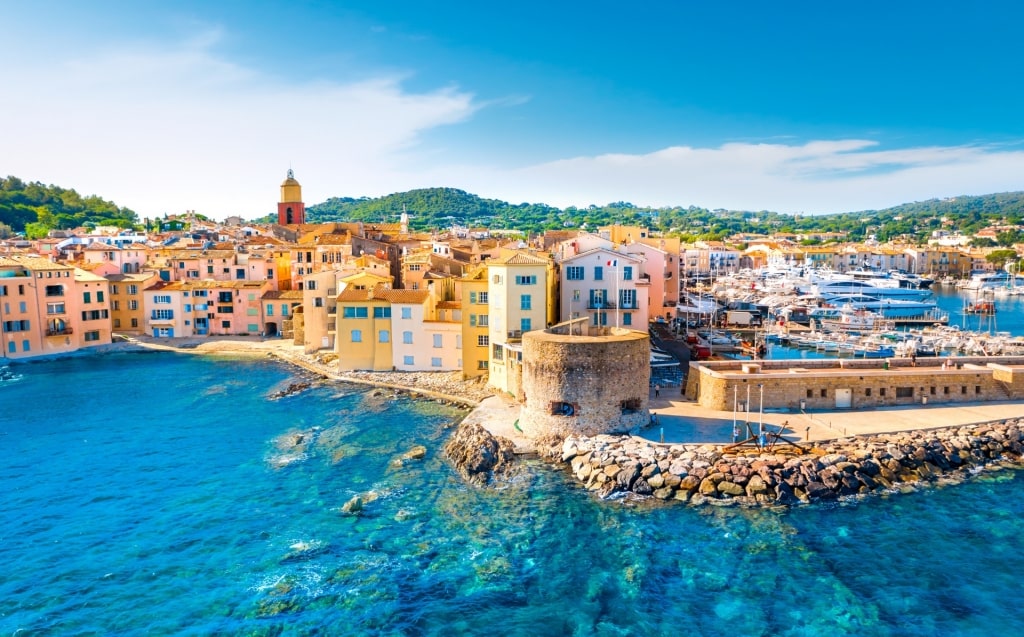
Saint-Tropez
The wealthy and famous, since the latter part of the 19th century, have flocked to Provence, France for their holidays, many summoned by the charm and seaside allure of Saint-Tropez.
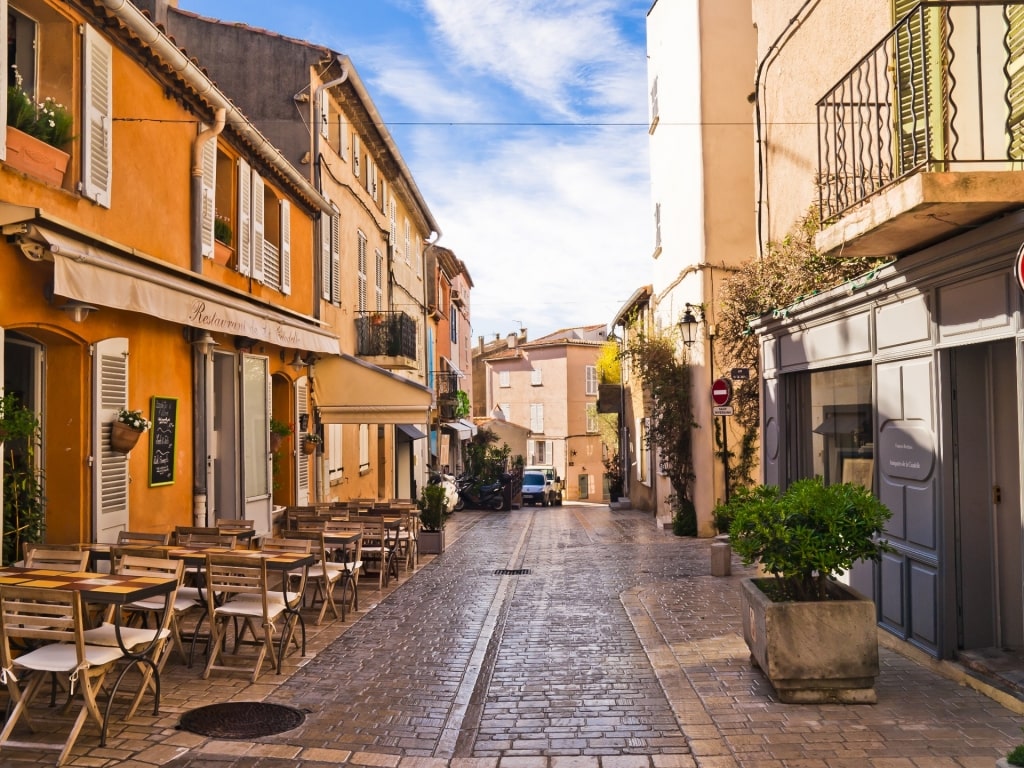
Old Town, Saint-Tropez
When you’re in Saint-Tropez, one of the best small towns in France, you’ll be treated to a chic old town, and a pretty harbor, the Vieux Port, home to fishing boats and sleek-looking superyachts.
If you want to eat and drink well, you’ll come across many adorable cafés, sophisticated restaurants, and other establishments happy to cater to your culinary whims. Fresh seafood is a mainstay here.

Tropézienne
Try a tarte Tropézienne, too; this fluffy brioche, flavored with orange blossom water and filled with whipped Chantilly cream, was named by Brigitte Bardot when she was filming on location here in the 1950s.
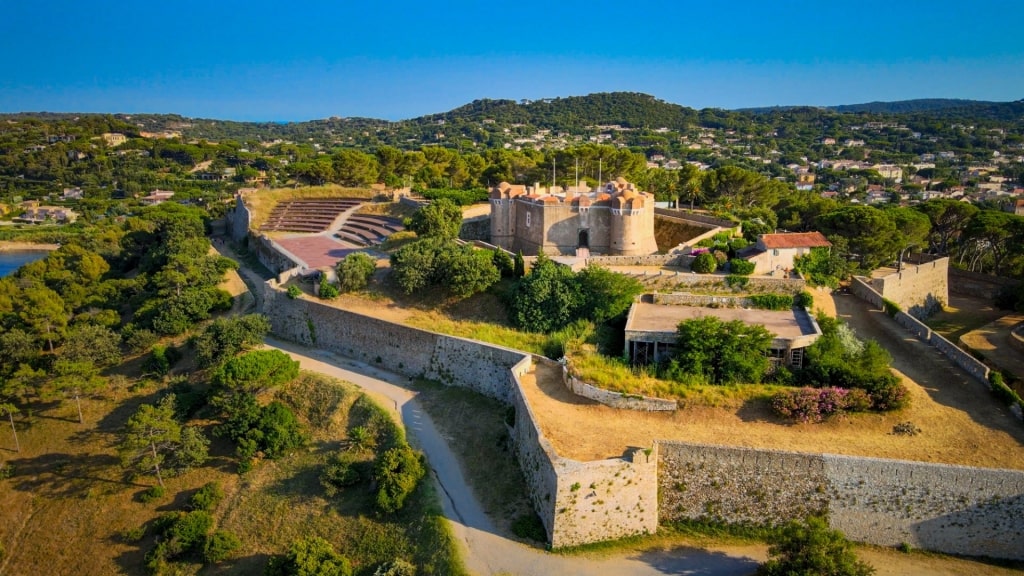
Citadelle de Saint-Tropez
For views of the town below, hike up to Citadelle de Saint-Tropez, which has been converted into a naval museum, and now delves into the area’s maritime heritage.
Take a Lavender-Infused Journey to the Valensole Plateau
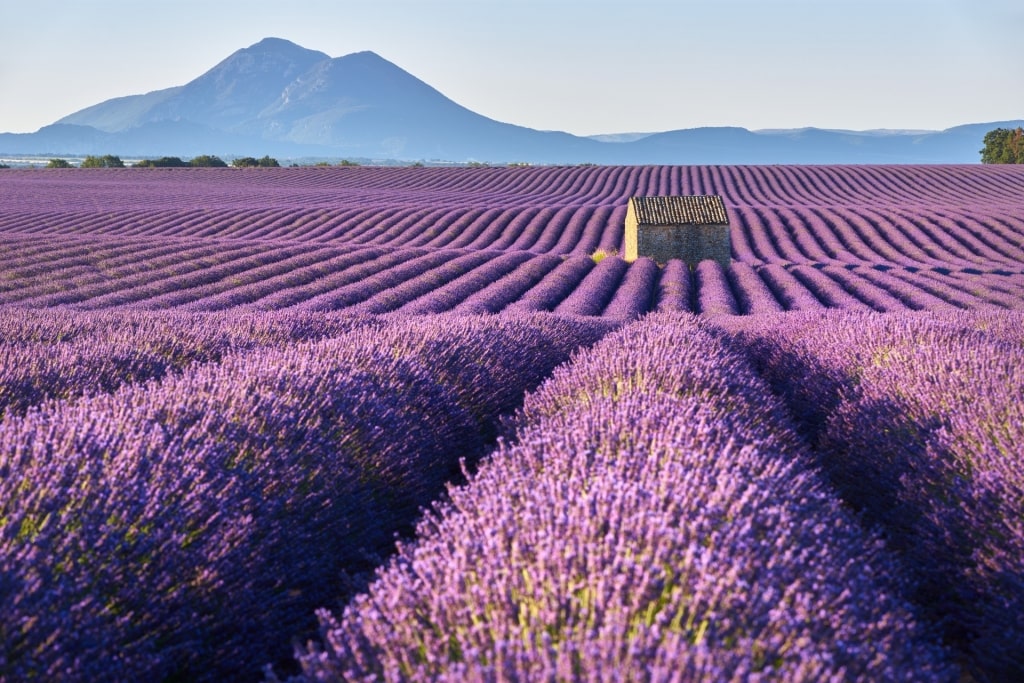
Valensole Plateau
Inhale the fragrant scents stemming from rows of dark purple lavender fields stretching out as far as you can see. One of the best places to experience these bucolic scenes is around the Valensole Plateau in Verdon, northeast of Marseille.
Provence’s lavender fields have inspired many painters over the years, as well as amateur and professional photographers. Blooming during the warmer summer months, these iconic fields can be made all the more pleasurable if you book a horseback ride through the lines of purple.
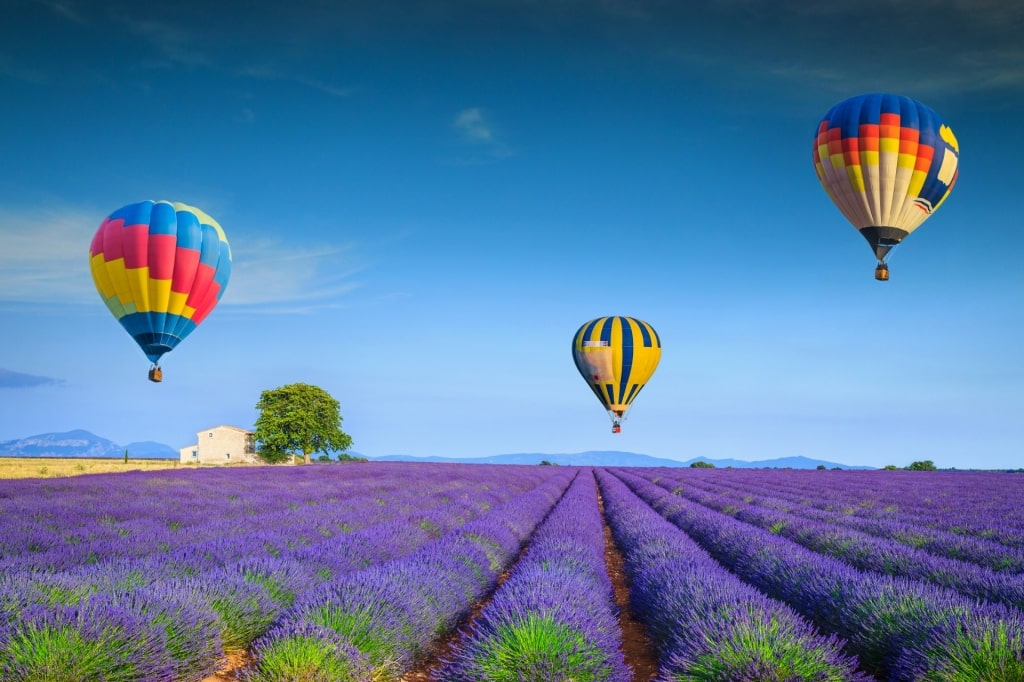
Valensole Plateau
Stop by the Musée de la Lavande in Valensole to learn more about lavender. For an eagle’s eye view, hop on a hot air balloon and drift high above the lavender fields that France is known for.
Enjoy History and Nature in Arles and the Camargue
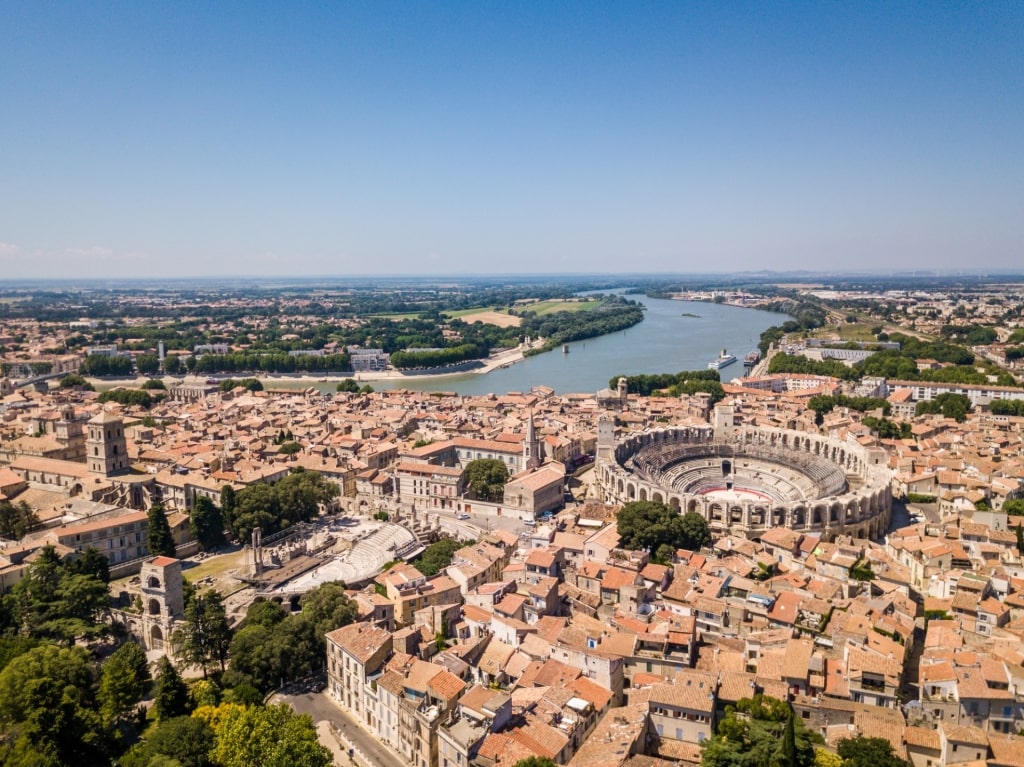
Arles
Arles and the Camargue combine art, culture and nature. Arles, a UNESCO World Heritage Site, was where Vincent Van Gogh painted many of his famous canvases. The Fondation Vincent van Gogh Arles is a wonderful spot where you can discover more about the artist.
The town, and its historic center, are located next to the Rhône river. Arles is home to many significant monuments, including the Baths of Constantine, the Roman amphitheater, and the Cloister of St. Trophime, just to mention a few.
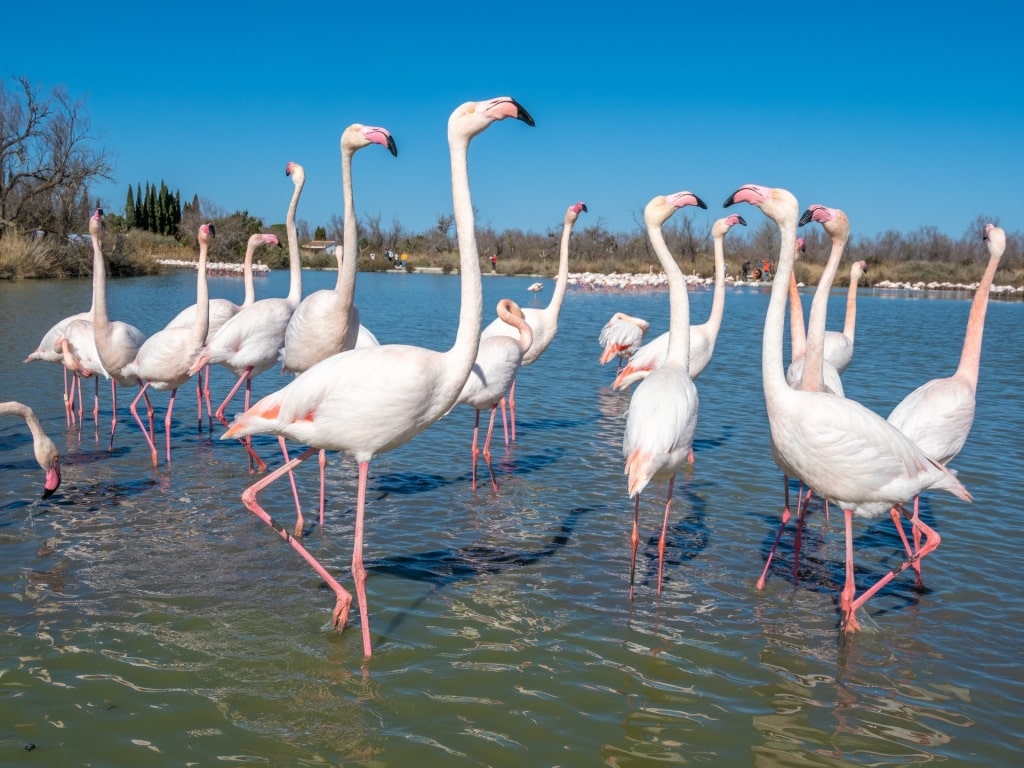
Camargue
The Camargue is a wild natural park south of Arles on the Rhône Delta, fringing the sea. Inside the park, you’ll encounter the region’s famous breed of white horses, free-ranging bulls, expansive salt marshes, swampy lagoons, and flocks of pink flamingos.
Discover Toulon’s Opera and Cathedral
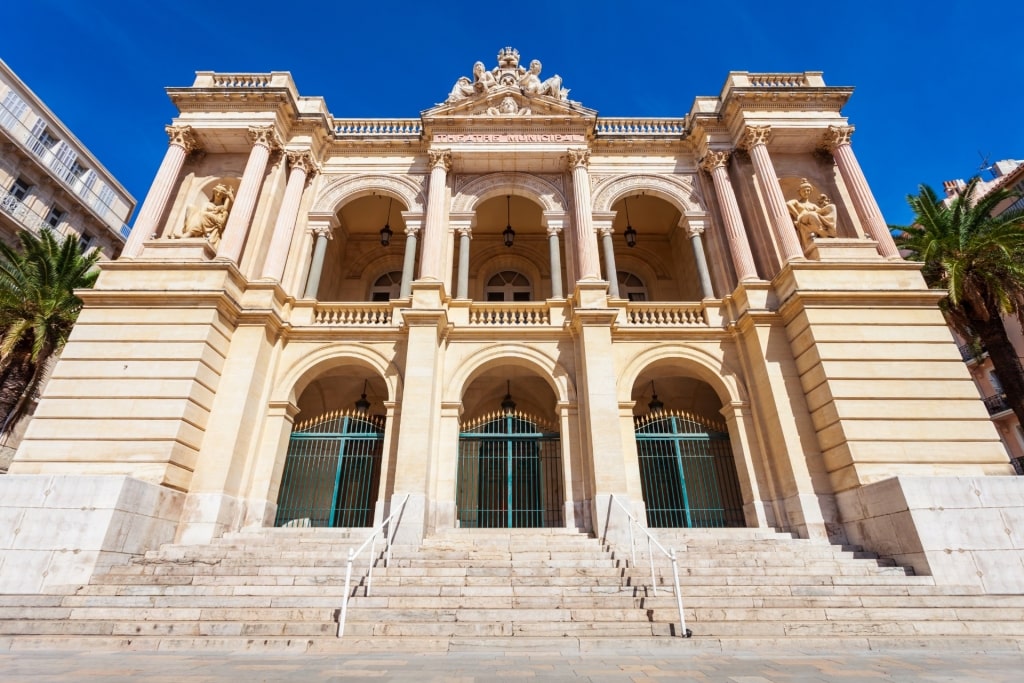
Le Grand Théâtre de Toulon
After strolling around Toulon’s Old Town and pursuing some of the open-air and covered markets, like the Cours Lafayette market, Saint Jean du Var market, or the Halles de Toulon, why not visit the city’s Opera and Cathedral?
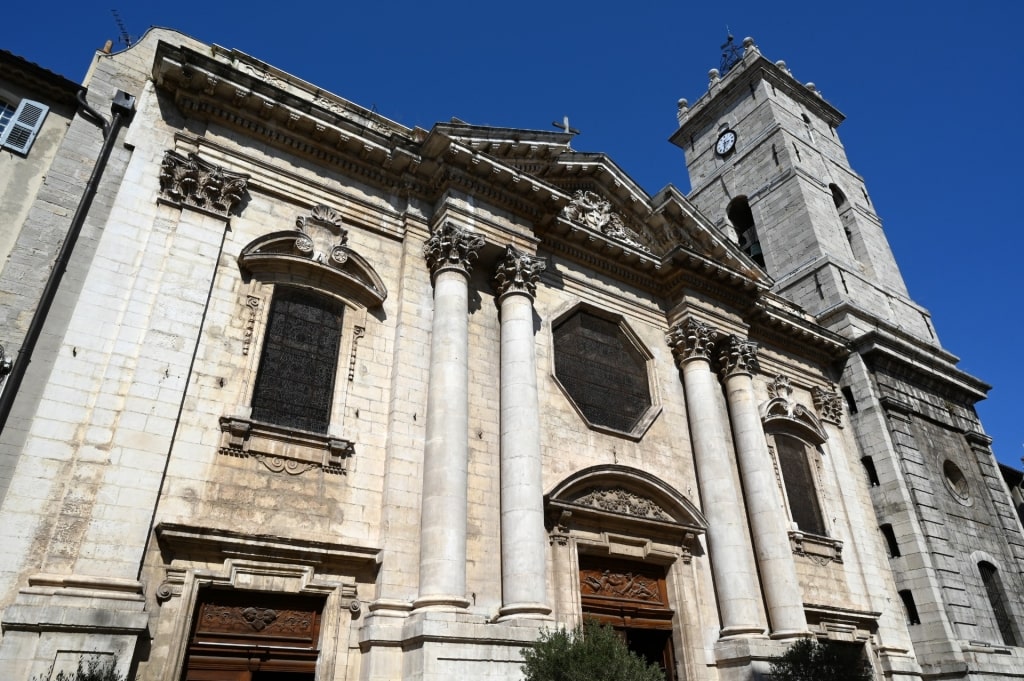
Sainte-Marie-Majeure Cathedral, Toulon
The Sainte-Marie-Majeure cathedral, with its current incarnation dating back to the 11th century, is a superb building, showcasing a variety of architectural styles, including baroque, classical, romanesque, and even some gothic.
If you adore opera, Le Grand Théâtre de Toulon, built in the towering French Second Empire style, should also be on your list. This magnificent building in Toulon is the second largest opera house in France after Paris, and is renowned for its incredible acoustics.
Food & Drink
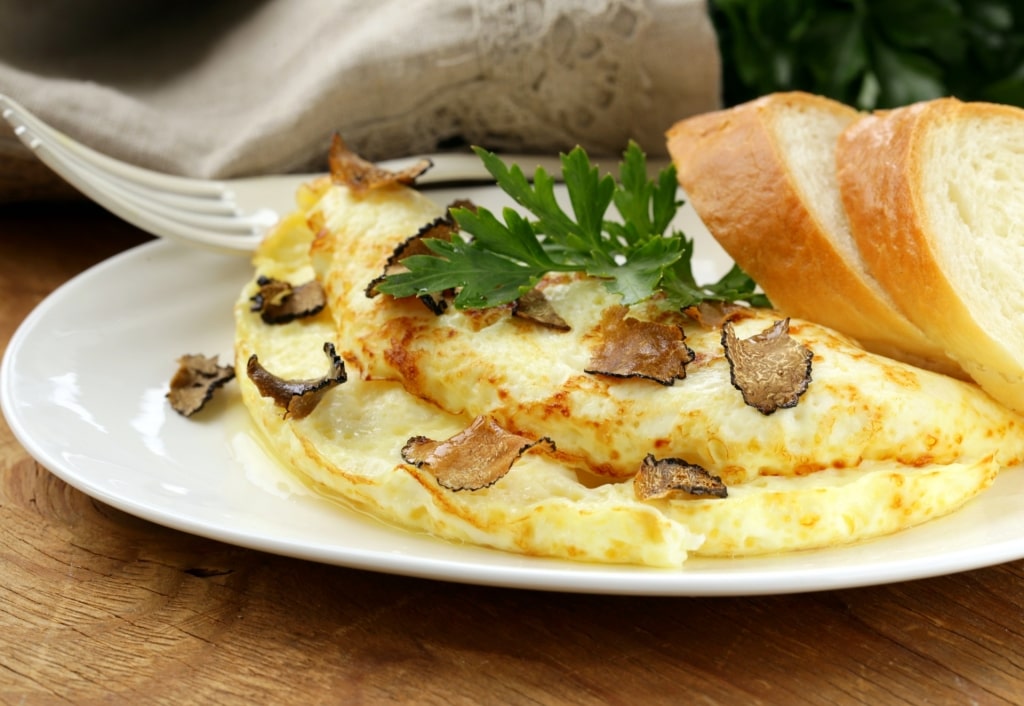
Omelette aux truffes
With a profusion of sun and good soil, Provence has long-standing agriculture, culinary and viticulture traditions.
You can hunt for black truffles, then tuck into an omelette aux truffes, or visit tasting rooms at local vineyards offering red, white, and rosé wines. You can also reap the edible rewards from local olive groves, producing superb olive oil.
World-class gastronomy and lots of fresh seafood and produce are always on the menu in Provence.

Ratatouille stew
Some of Provence’s most famous dishes include the zesty eggplant-based ratatouille stew, appetizing tapenade paste made with olives, capers and lemon juice, and of course bouillabaisse fish stew, legendary in Marseille, where it was invented, and a feature of most menus.

Salade Niçoise
For something flavorful and light, dig into a Salade Niçoise, prepared with anchovies, beans, capers, hard-boiled eggs, and tomatoes, draped in a dressing of garlicky olive oil. Look out for socca, a delicious flatbread made from garbanzo bean flour, garlic, olive oil, and salt.
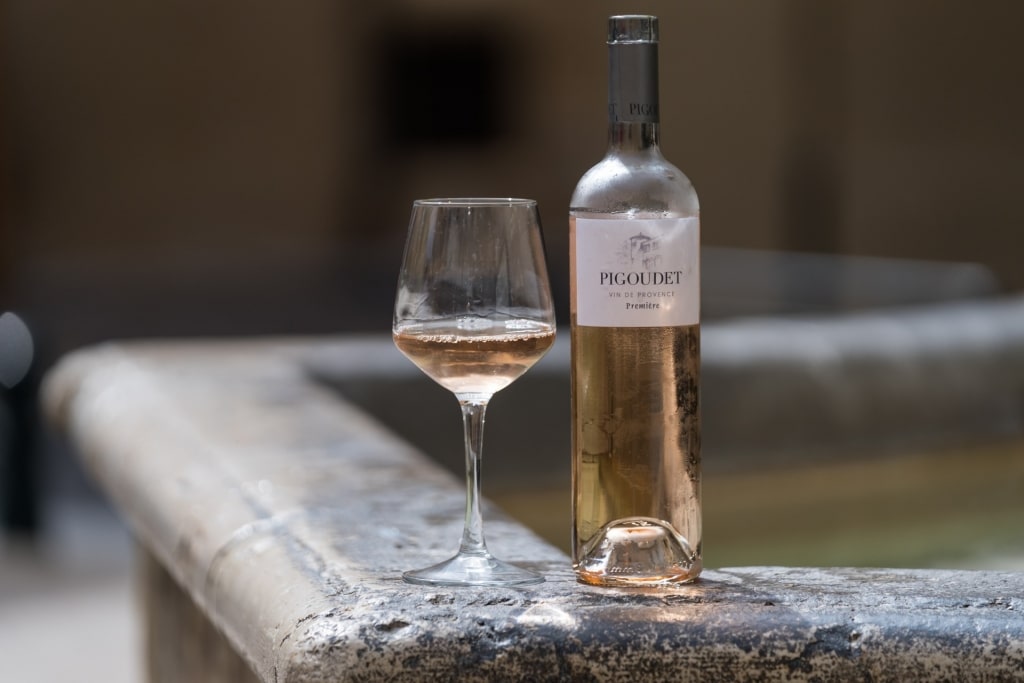
Rosé wine
You’ll also find wonderful whites and reds, rosé wines, coming from cabernet sauvignon, grenache, syrah, viognier, and mourvèdre grapes, among others. There are two wine appellations here, Côtes du Rhône AOC and Provence AOC, Or try pastis, an anise-flavored liquor that’s drunk diluted with water, which makes it cloudy.
You’ll see fishermen around the Vieux Port in Marseille chatting over a pastis after they’ve brought in and offloaded their catch. It’s an acquired taste, though.
Best Time to Visit Provence, France
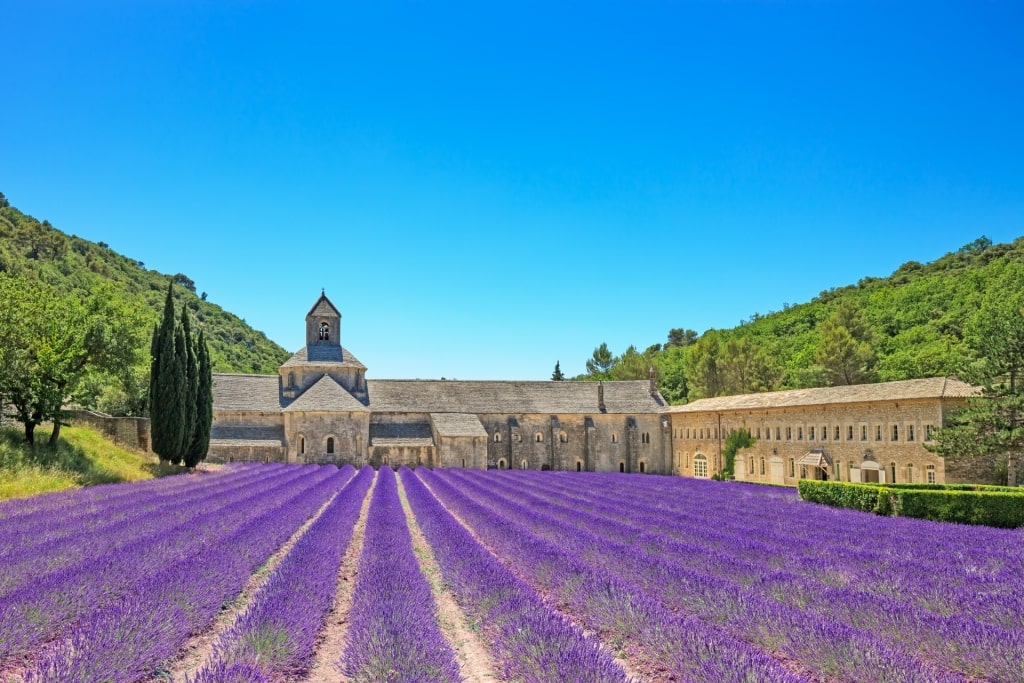
Provence
The best time to visit Provence depends on what you want to see and do. And while this region happens to be the sunniest in France, springtime and late autumn can see some rain showers now and then.
If you want to catch the lavender fields at their best, June and July are the months to arrive. Summer in France is also when you can experience the golden splendor of Provence’s sunflower fields in full bloom—often contrasting beautifully against the deep purple backdrop of lavender. September and October are cooler months, ideal for sightseeing.
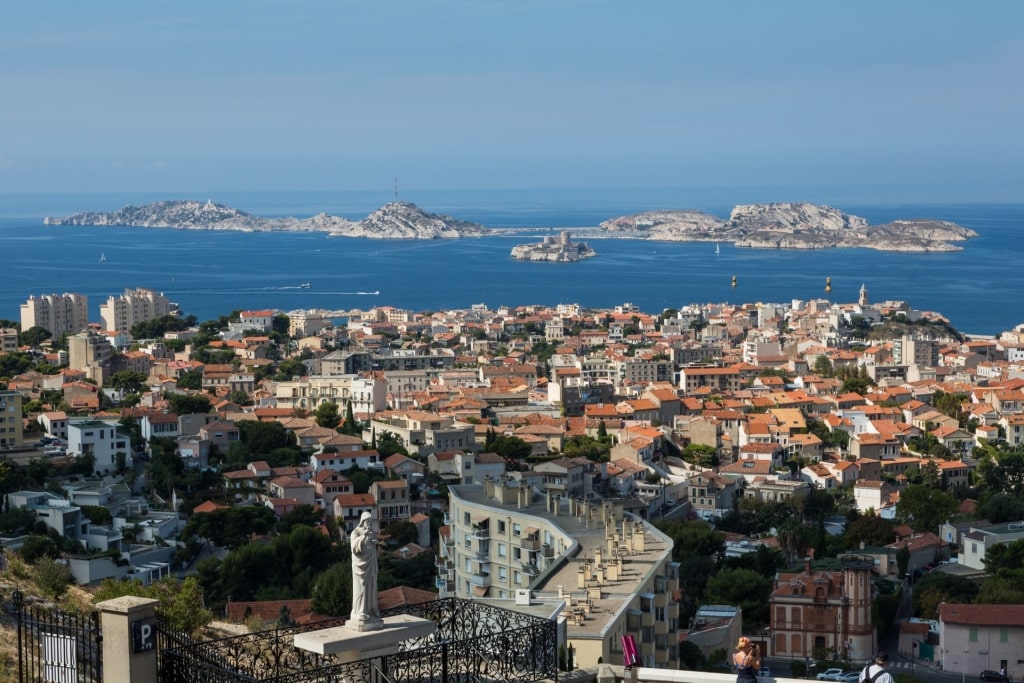
Marseille
Embark on a cruise to Provence with Celebrity Cruises to explore the region’s culture, history, nature, and culinary traditions.
